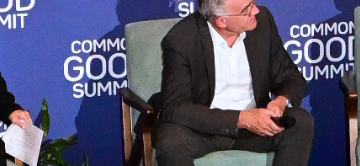The Covid-19 vaccine has demonstrated our societies’ capacity for radical, collective action to address global challenges. But the development of vaccines responded to a problem with immediate impact. The fight against global warming is no less urgent, but its delayed impact has led to a large market and political failure. We all have our part to play, says TSE founder Jean Tirole, in urging the international community to prevent global warming from inflicting lasting damage on future generations. Drawing on his book ‘Economics for the Common Good’, he maps a common-sense path to putting earlier negotiations back on track.
Despite the accumulation of scientific evidence that human actions play an important role in global warming, international action has been disappointing. TheParis agreement failed to create an international coalition for a carbon price in proportion to its social cost. It further failed to address the world shortage of green R&D (only 4% of our R&D focuses on global warming). In sum, it doesn't not take the free-rider problem seriously.
Every international agreement must satisfy three criteria: economic efficiency, incentives to respect commitments, and fairness. Efficiency is possible only if all countries apply the same carbon price. Adequate incentives require penalties for free riders. Fairness, a concept defined differently by each stakeholder, should be achieved through lump-sum transfers. The strategy of voluntary pledges to reduce emissions is another example of countries postponing a binding commitment on emissions to a later date.
Glimmers of hope
However, we should not fail to mention reasons for optimism. First, public awareness of the problem has grown in recent years, even if the current pandemic may put environmental considerations on the back burner for a while. In addition, more than 40 countries, including some of the most important (the US, China, Europe) have created tradable emissions permit markets. Although they have generous ceilings and very low carbon prices as a result, they demonstrate a commitment to use a rational policy to fight global warming. Local carbon markets may someday connect to form a more coherent and efficient global market, even if ‘exchange rates’ will be a thorny issue. Finally, the sharp decline in the price of solar energy allows us to glimpse economic solutions to the problem of emissions in African and other developing and emerging countries. But all this will not be enough. So how can we build on these dynamics?
Although it is important to maintain a global dialogue, the UN process has shown predictable limits. Negotiations between 195 nations are incredibly complex. We need to create a “coalition for the climate” that brings together, from the outset, the major polluters, present and future. This could be the G20 or a more restricted group: in 2012, the five biggest polluters—Europe, the US, China, Russia, and India—represented 65 percent of worldwide emissions. The members of this coalition could agree to pay for each ton of carbon emitted. At first, no attempt would be made to involve all 195 countries in the global negotiation, but they would be urged to join in. Coalition members would put pressure on the WTO, and countries that refused to enter the coalition would be taxed at borders. The WTO would be a stakeholder on the basis that non-participants are guilty of environmental dumping; to avoid undue protectionism by individual countries, it would contribute to the definition of punitive import duties.
What can we do?
Simply put, we need to get back on the path of common sense.
1. The first priority of future negotiations ought to be an agreement in principle to establish a universal carbon price compatible with the objective of no more than a 1,5°C increase in average global temperatures. Proposals seeking carbon prices differentiated on the basis of country not only open a Pandora’s box, they are not good for the environment, because the future growth of emissions will come from emerging and poorer countries. Underpricing carbon in these countries will not limit warming to a 2°C increase: high prices for carbon in developed countries will encourage the offshoring of production facilities that emit greenhouse gases to countries with low carbon prices, nullifying efforts made in wealthy countries.
2. Let us substantially increase green R&D efforts, by creating for example a European ARPA-E. And let us provide this entity with proper governance so as to avoid a failed industrial policy.
3. We also have to reach an agreement on an independent monitoring infrastructure to measure and supervise emissions in signatory countries, with an agreed governance mechanism.
4. Finally, let us confront head-on the question of equity. This is a major issue, but burying it in discussions devoted to other subjects does not make the task any easier. There must be a negotiating mechanism that, after the acceptance of a single price for carbon, focuses on this question. Today, it is pointless to try to obtain ambitious promises for green funds from developed countries without that leading to a mechanism capable of achieving climate objectives. Green financial assistance could take the form of financial transfers or, if there is a world market for emissions permits, of a generous allocation of permits to developing countries.
There is no other way forward.
TSE Mag #21 Winter 2021
Photo by Markus Spiske on Unsplash




